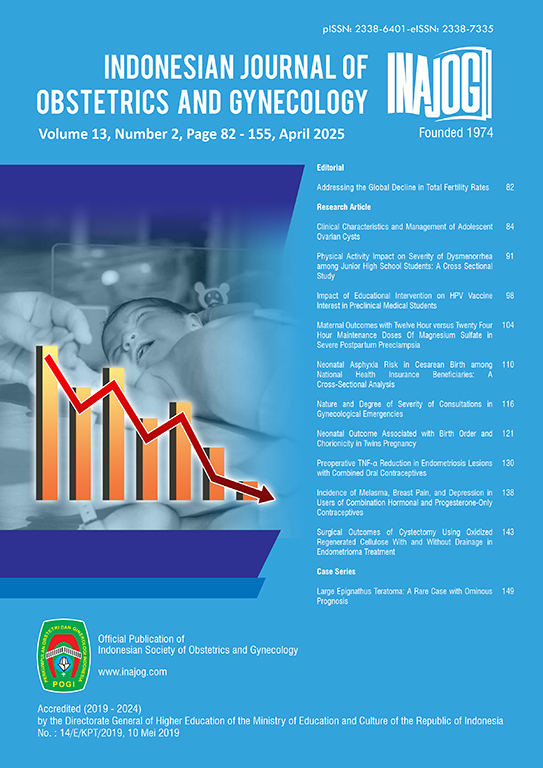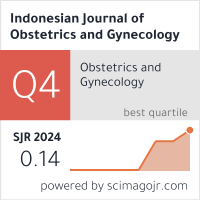Large Epignathus Teratoma: A Rare Case with Ominous Prognosis
Abstract
Introduction:
The prevalence of epignathus teratomas is found to be less than 1% of all congenital teratomas. Incidence of female fetuses compared to male fetuses (ratio 3:1).
Method :
This case study was conducted at Dr. Hasan Sadikin General Hospital Bandung between September - December 2022.
Case Report :
We presented three cases of large epignathus teratoma with different complications each, with the same outcome, 2 cases of large epignathus teratoma were likely caused due to risk factors of poor environmental influence. The first case, large epignathus teratoma was referred with a suspicion of conjoined twin, the second case was accompanied by pulmonary tuberculosis with intracranial expansion, the third case was large epignathus teratoma with A Umbilical revered of end-diastolic flow and MCA absent end diastolic flow accompanied by scalp edema.
Conclusion:
These three cases are very rare, describing large epignathus teratomas with a poor prognosis based on size and their location associated with perinatal complications. The establishment of the diagnosis is enough to carry out an ultrasound examination. It is important to determine the time and type of labor to be chosen. Inform consent parents is important, especially to know the outcome of the baby and the recurrence in the next pregnancy
Downloads
Copyright (c) 2025 Indonesian Journal of Obstetrics and Gynecology

This work is licensed under a Creative Commons Attribution-NonCommercial-ShareAlike 4.0 International License.













